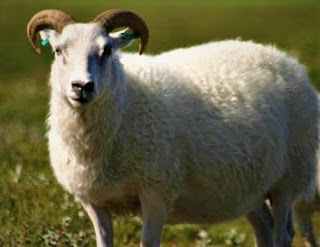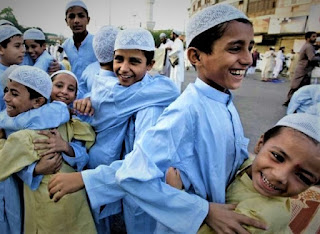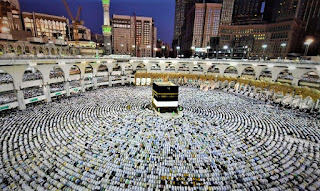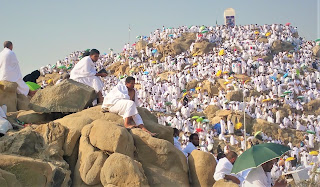Eid ul Adha
 Eid-ul-Adha is a festival known as “Feast of Sacrifices”,
which is celebrated by Muslim ummah all over the World, on the tenth of Dhu al
Hajj according to the lunar Islamic calendar. Eid-ul-Adha is a day of
distributing meat among others, saying Takbir loudly before Eid prayer on first
day and after prayers throughout the three days of Eid-ul-Adha. Such sort of
things are considered an essential part of the Eid-ul-Adha. Other different names
of Eid-ul-Adha are as follows:
Eid-ul-Adha is a festival known as “Feast of Sacrifices”,
which is celebrated by Muslim ummah all over the World, on the tenth of Dhu al
Hajj according to the lunar Islamic calendar. Eid-ul-Adha is a day of
distributing meat among others, saying Takbir loudly before Eid prayer on first
day and after prayers throughout the three days of Eid-ul-Adha. Such sort of
things are considered an essential part of the Eid-ul-Adha. Other different names
of Eid-ul-Adha are as follows:· Kurban Bayrami in Turkey
· Eid-ul-Kabir in Bangladesh
· Bakra Eid or Bari Eid in Pakistan and India
· Bakara Eid in Trinidad
· Tobaski in Senegal and Gambia
· The feast of sacrifice in Uzbekistan
· The Hajj feast in Malaysia, Indonesia, and the Philippines
· Big Sallah in Nigeria
· Eid-ul-Bakara in Egypt, Saudia Arabia, and the Middle East.
Hajj and Eid ul Adha
Eid-ul-Adha is celebrated at the end of Hajj, the sacred
pilgrims to the holy
The city of Makkah. The haj to Makkah is once in a lifetime
upon all Muslims. It is also explained in the words of the Quran as “those who can
make their way there”. The Hajj is associated with the life of Islamic prophet Muhammad (PBUH) from the
7th century, but the ritual of pilgrimage to Makkah is considered by Muslims to
take back thousands of years to the time of Ibrahim(Abraham). During Hajj, pilgrims join the procession of hundreds of
thousands of people, who simultaneously converge on Makkah for performing Hajj
rituals, which are as follows: each person walks counter-clockwise seven times around the Khana Kaaba (the direction of prayer for the Muslims), runs back and forth between the hills of Safa and Marwah, drinks from the Zamzam Well goes to the plains of Mount of Arafat to stand in vigil, spends a night in the plain of Muzdalifa, and performs the symbolic stoning of the devil by throwing stones at three pillars. After sacrificing their animal, the Pilgrims then are required to shave their head. Then they celebrate the three-day global festival of Eid al-Adha.
Mercy by Allah
The word "Eid" appears once in Al-Ma'ida, the fifth
Surah of the Quran, with the meaning "solemn festival". Eid-ul-Adha is the second of the two Islamic
festivals and considered holier as it honors the willingness of our Prophet
Ibrahim(Abraham) to sacrifice his son Ismail for Allah’s command. But before
Abraham could sacrifice his son for sake of Allah’s obedience, Allah Almighty
provided a lamb instead of Ismail. Eid-ul-Adha reminds everyone of the mercy by
Allah upon mankind. In commemoration of this act, an animal is sacrificed on
the way of Allah Almighty every year on this specific day and is divided into
three different parts
- One share is for poor and needy
- second is for home
- third and last part is for relatives.
The sacrifice of animal and gathering
 Muslims who can afford it, sacrifice their best
domestic animals (usually a cow, but can also be a camel, goat, sheep, or ram
depending on the region) as a symbol of Abraham's willingness to sacrifice his
only son Ismail for Allah’s order. In Pakistan alone, nearly ten million animals
are slaughtered on Eid-ul-Adha for the sake of Allah’s order and blessing. Just like Eid-ul-Fitr, Eid-ul-Adha also
commences with a prayer which is followed by a Khutba. The devotees after
offering Eid-ul-Adha prayer embrace and exchange greetings with each other, give
gifts and visit each other home. On the day
of Eid-ul-Adha, Muslims wear their
new or best clothes. Women cook special sweets of different kinds. They gather
with family and friends to spend good time.
Muslims who can afford it, sacrifice their best
domestic animals (usually a cow, but can also be a camel, goat, sheep, or ram
depending on the region) as a symbol of Abraham's willingness to sacrifice his
only son Ismail for Allah’s order. In Pakistan alone, nearly ten million animals
are slaughtered on Eid-ul-Adha for the sake of Allah’s order and blessing. Just like Eid-ul-Fitr, Eid-ul-Adha also
commences with a prayer which is followed by a Khutba. The devotees after
offering Eid-ul-Adha prayer embrace and exchange greetings with each other, give
gifts and visit each other home. On the day
of Eid-ul-Adha, Muslims wear their
new or best clothes. Women cook special sweets of different kinds. They gather
with family and friends to spend good time.

No comments:
Post a Comment